I have a dataframe that looks as follows:
X = c(6,6.2,6.4,6.6,6.8,5.6,5.8,6,6.2,6.4,6.6,6.8,7,7.2,7.4,7.6,7.8,8,2.8,3,3.2,3.4,3.6,3.8,4,4.2,4.4,4.6,4.8,5)
Y = c(2.2,2.2,2.2,2.2,2.2,2.6,2.6,2.6,2.6,2.6,2.6,2.6,2.6,2.6,2.6,2.6,2.6,2.6,2.8,2.8,2.8,2.8,2.8,2.8,2.8,2.8,2.8,2.8,2.8,2.8)
Value = c(0,0.00683254,0,0.007595654,0.015517884,0,0,0,0,0,0,0,0,0,0.005219395,0,0,0,0,0,0,0,0,0,0,0,0.002892342,0,0.002758141,0)
table = data.frame(X, Y, Value)
I have put together a heatmap in R, based on the following command:
ggplot(data = table, mapping = aes(x = X, y = Y)) +
geom_tile(aes(fill = Value), colour = 'black') +
theme_void() +
scale_fill_gradient2(low = "white", high = "black") + xlab(label = "X") + ylab(label = "Y")
Since there is not a value for every X and Y, it leads to plots that appear as follows.
I am attempting to smoothen the plot and have the following question:
As there are small white spaces between the plotted values, how could one color these white spaces to be the median intensity? Said differently, how would I first create an initial layer with non-zero median 'Value' before plotting the non-zero 'Value' on top (overlayed)?
A sample is shown below, which has been 'smoothed', which looks closer to the desired output.


